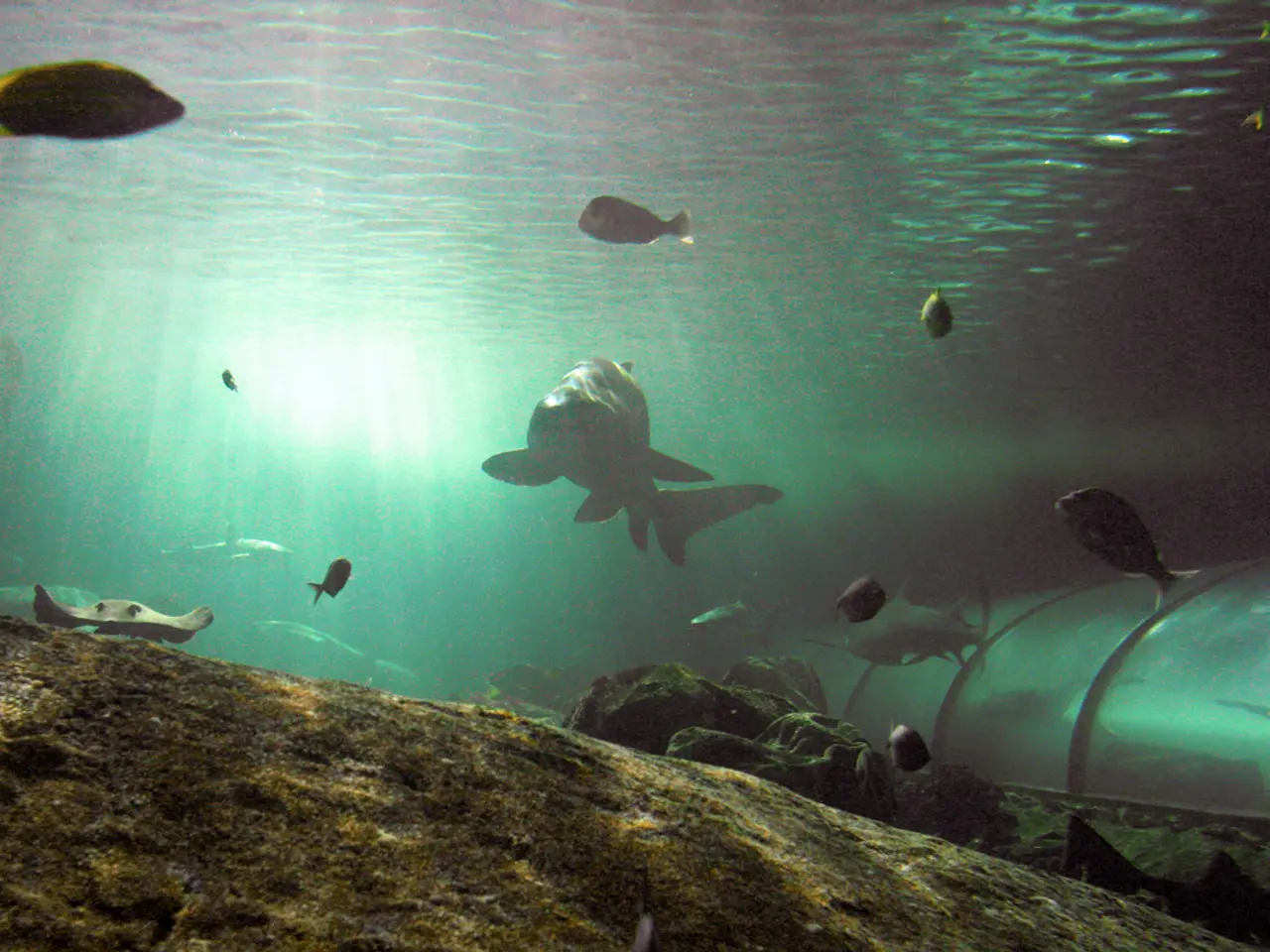Finland Launches AI-Equipped Satellite to Monitor Harmful Algal Blooms from Orbit
In a groundbreaking development, tech startup Kuva Space, in collaboration with the Finnish Environmental Institute (Skye), is set to revolutionise the monitoring of harmful algal blooms, particularly cyanobacteria, in Finland's lakes and seas.
The heart of this innovation lies in Kuva's hyperspectral satellites, which are equipped with advanced sensors capable of analysing a wider light spectrum than traditional sensors. This technology enables more detailed and precise data collection, making it ideal for identifying harmful algal blooms, including cyanobacteria.
The integration of machine learning algorithms further enhances the system's capabilities. By processing the vast amounts of data collected, real-time analysis and pattern recognition become possible, enabling the system to identify and predict the spread of cyanobacteria more effectively.
One of the key advantages of this technology is its ability to provide real-time insights. This capability ensures that authorities can respond promptly to emerging environmental issues, such as harmful algal blooms in Nordic waters.
Moreover, the system's accuracy and precision enable it to differentiate between various types of algae and other environmental factors, providing detailed information about cyanobacteria concentrations and distribution.
Beyond environmental applications, the technology also holds potential for various sectors. Defense ministries can use the data for surveillance, while the agricultural sector can optimise the sensors to monitor crops. Industrial sites can deploy the imagery to detect chemical leaks, and in marine ecosystems, the technology can track aquatic species, water quality, and illegal fishing vessels.
In a bid to challenge traditional water sampling methods, Kuva and Skye are exploring a potential alternative. They aim to train AI models on hyperspectral satellite imagery, water samples, and insights from biochemical and genetic research.
It's worth noting that cyanobacteria are visually indistinguishable from other, harmless algal blooms. However, from space, Kuva's probe can read the spectral signatures of almost any material on Earth, including toxic cyanobacteria.
Kuva's first satellite, Hyperfield-1A, was launched in August 2024, and the company plans to have 100 satellites in orbit by 2030. This ambitious expansion aims to provide comprehensive and continuous monitoring of our planet's waters, paving the way for more effective environmental management and public health protection.
Jenni Attila, a leading researcher at Skye, expresses her excitement about this collaboration, highlighting its potential to transform our understanding and management of environmental phenomena. This collaboration indeed promises a brighter future for environmental monitoring, offering more precise, timely, and comprehensive data.
This development in environmental-science, spearheaded by the integration of artificial-intelligence and technology, is poised to revolutionize the monitoring of climate-change indicators like harmful algal blooms, particularly cyanobacteria. The trained AI models, based on hyperspectral satellite imagery, water samples, and insights from biochemical and genetic research, could potentially replace traditional water sampling methods.




